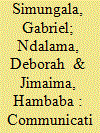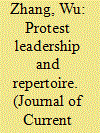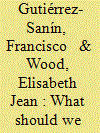|
|
|
Sort Order |
|
|
|
Items / Page
|
|
|
|
|
|
|
| Srl | Item |
| 1 |
ID:
185142


|
|
|
|
|
| Summary/Abstract |
We draw from the meaning-making practices on the margins, the communicative repertoires of the multilingual and multicultural students at two Southern African universities: the University of Zambia in Lusaka, Zambia; and the University of Malawi in Zomba, Malawi. As our locus, we are interested in the unique linguistic/semiotic coinages which constitute the students’ linguistic repertoires as multilingual innovations amenable to placemaking. In an attempt to do this, we purposefully unearth lexical innovations which we analyse within the broader framework of translanguaging. Thus, we show the emergence of (new) lexical items through the (re-)invention and disinvention of communicative resources, and the deployment of material artefacts of place as a basis for the creativity and innovation through repurposing of lexical items for new uses. Thus, we privilege students as active manipulators of their communicative practices by showing the semiotic/linguistic creativity and innovation inherent in their repertoires.
|
|
|
|
|
|
|
|
|
|
|
|
|
|
|
|
| 2 |
ID:
121257


|
|
|
|
|
| Publication |
2013.
|
| Summary/Abstract |
Based on detailed ethnographic fieldwork, this paper compares two cases of peasant protest against heavy taxes and fees in a
northern Hunan county in the 1990s. It argues that peasant protest did
not arise spontaneously. Rather, it erupted when leaders emerged who
used central policy documents on lowering peasant taxes and fees to
mobilise peasants. Protest leaders were articulate and public-spirited
peasants who had received political training from the local party-state.
Furthermore, the number of leaders, their education level, and their relationship with the local party-state explain why the repertoire and the
scope of the two protests varied. Protests led by less educated veteran
Communist Party cadres tended to be milder and smaller than those led
by better-educated peasants more distant from the local party-state. This
paper helps us to understand the process of peasant mobilisation in contemporary China and explains why peasant protest varies across cases.
|
|
|
|
|
|
|
|
|
|
|
|
|
|
|
|
| 3 |
ID:
156159


|
|
|
|
|
| Summary/Abstract |
To leverage the full range of observed variation in patterns of violence toward the development and testing of theories of political violence, scholars need adequate conceptual foundations: what should we mean by a pattern of violence on the part of an armed organization? Scholars often distinguish degrees or levels or types of violence across organizations and conflicts, but definitions and measures vary sharply. We argue that patterns of violence are not reducible in ways often assumed in the literature: lethal violence is not a good proxy for the overall pattern, and differences in patterns are not well captured in the binary “terror” versus “restraint.” To address these concerns, we provide a new conceptualization of political violence, defining an organization’s pattern of violence as the configuration of repertoire, targeting, frequency, and technique in which it regularly engages. This approach adds precision to the documentation and analysis of political violence, clarifies the evaluation of rival theories, and opens up new research questions. We demonstrate its utility through an analysis of violence against civilians in Colombia, drawing on an original database of massacres, judicial proceedings, and other sources, and show that the concept of “pattern” helps bring ideology and politics back into the analysis of organized violence.
|
|
|
|
|
|
|
|
|
|
|
|
|
|
|
|
|
|
|
|
|